Search Images
Browse Content (p. 1573)
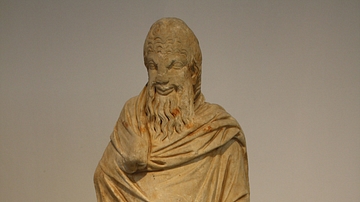
Image
Pan Wearing an Animal Skin
A Parian marble statue of Pan. He holds a panpipe and wears an animal skin. From Sparta. 1st century CE copy of a 4th century BCE original. (National Archaeological Museum, Athens)
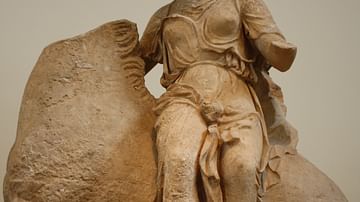
Image
Nereid Rising from the Ocean on a Horse
A Nereid (or Aura) riding a horse as she rises from the Ocean. Pentelic marble, c. 380 BCE. By the sculptor Timotheos. (National Archaeological Museum, Athens).
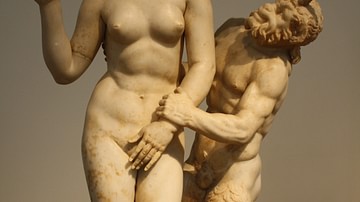
Image
Aphrodite, Eros, & Pan
A Parian marble statue group of Aphrodite, Eros, and Pan. From the 'House of the Poseidoniastai', Delos. The statue was dedicated to Dionysos, c. 100 BCE. Aphrodite is depicted fighting off the advances of Pan with her sandal. (National Archaeological...
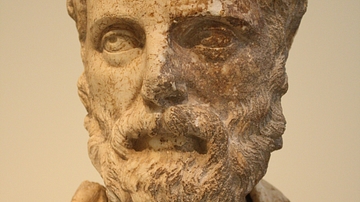
Image
Herodes Atticus
A Pentelic marble portrait bust of Herodes Atticus. Provenance: Khisias, Attica, mid-2nd century CE. Atticus was a wealthy Athenian sophist who funded many public projects, notably the theatre on the slopes of the Athenian acropolis. (National...

Image
Athena (after the East pediment of the Parthenon)
A Pentelic marble statue of Athena considered to be similar to that originally on the East pediment of the Parthenon. The statue was dedicated to Artemis, mid-3rd century CE. (National Archaeological Museum, Athens)

Image
Seats of the Theatre of Dionysos, Athens
A row of the special stone seats from the front rows of the Theatre of Dionysos, on the slopes of the acropolis of Athens. Second half of the 4th century BCE. The theatre was orginally constructed in the 6th century BCE.
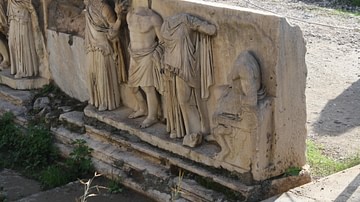
Image
Sculptural Decoration, Theatre of Dionysos, Athens
Part of the sculptural decoration from the Late Roman Bema of Phaedrus, the Theatre of Dionysos, on the slopes of the acropolis of Athens. 4th century CE. (The theatre was orginally constructed in the 6th century BCE). The scenes depict episodes...
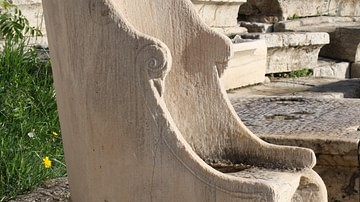
Image
Seat from the Theatre of Dionysos, Athens
One of the special front seats from the Theatre of Dionysos, on the slopes of the acropolis of Athens. Second half of the 4th century BCE. The theatre was orginally constructed in the 6th century BCE.

Image
Theatre of Dionysos Eleuthereus, Athens
The 4th century stone version of the Theatre of Dionysos Eleuthereus, on the slopes of the acropolis of Athens. The theatre was orginally constructed in the 6th century BCE.

Image
Euripides
A bust of Greek Tragedian Euripides (c. 484-407 BCE). Roman copy of a 4th century BCE Greek original. (Vatican Museums, Rome)